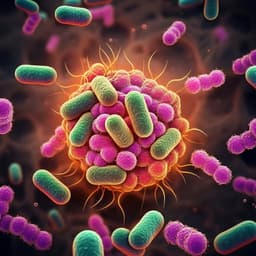
Environmental Studies and Forestry
Insight into wet scavenging effects on sulfur and nitrogen containing organic compounds in urban Beijing
C. Zhang, Y. Wang, et al.
Explore how the wet scavenging processes in urban Beijing influence sulfur and nitrogen-containing organic compounds in aerosols. This intriguing research conducted by Chunyan Zhang, Yonghong Wang, Jun Liu, Tianzeng Chen, Wei Huang, Zirui Liu, Biwu Chu, Qingxin Ma, and Hong He unveils fascinating shifts in organic aerosol composition before and after these processes.
Playback language: English
Related Publications
Explore these studies to deepen your understanding of the subject.







